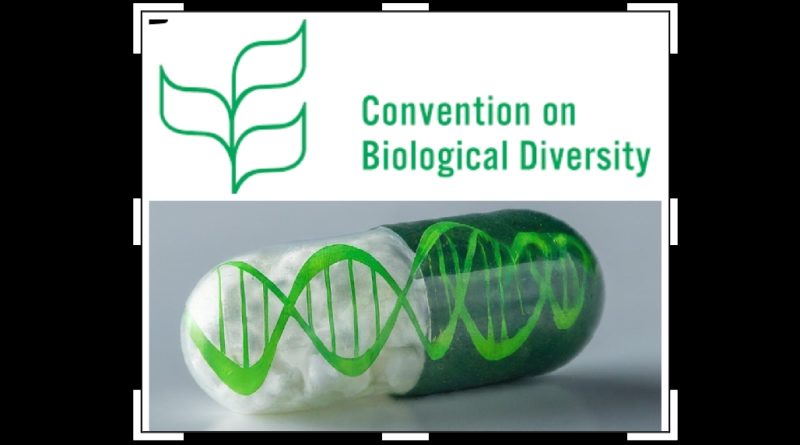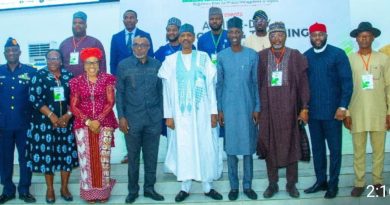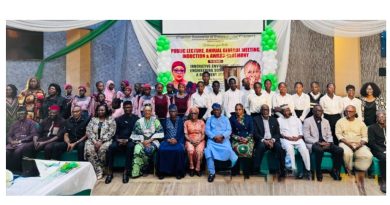UN publishes negotiation proposals for sharing rich benefits from plant, animal, microbial DNA sequences to support countries, communities protecting nature
Oru Leonard
UN has published negotiation proposals for sharing rich benefits from plant, animal, microbial DNA sequences to support countries, communities protecting nature
Goal: Equitable sharing of revenues from products such as drugs, cosmetics, agricultural biotechnology
Options include collecting a sliver of relevant revenues, potentially yielding billions of dollars Negotiations in Montreal 12-16 Aug. will set stage for historic decisions at UN Biodiversity Conference (COP 16), Colombia, 21 Oct-1 Nov.
UN documents released on Sunday, June 30, 2024, provide proposals and options to meet a global pledge to share fairly some of the multi-trillion-dollar revenues and other benefits derived from products produced, improved or related to the use of “digital sequence information on genetic resources (DSI)” — the DNA sequences of plants, animals and microbes.
A positive outcome would help address an outstanding gap in efforts to share the benefits derived from the use of genetic resources. A new multilateral mechanism was pledged by the UN Convention on Biological Diversity’s 196 Parties in 2022 at COP 15.
Agreement is needed on several questions, including which industrial sectors using DSI should share its benefits.
Top candidates include sectors creating and improving drugs, cosmetics, seeds and agricultural biotechnology.
The documents are published six weeks before nations meet in Montreal 12-16 August for final negotiations within the DSI intergovernmental negotiating group before the matter comes up for decision at the UN biodiversity Conference (COP 16) in October, in Cali, Colombia.
Co-Chairs of the negotiations, Mphatso Kalemba of Malawi and William Lockhart of the UK, note the that sectors that depend most on DSI generate from “one to a few trillion dollars annually;” just 0.1% of US $1 trillion would yield $1 billion for the global fund; 1% would amount to $10 billion.
Envisioned uses of the funds include supporting the conservation and sustainable use of nature, including related activities of Indigenous Peoples and Local Communities, and building capacity worldwide to generate and use DSI.
As noted in the meeting’s preparatory documents: “While all producers of products developed through the use of DSI or all companies operating in sectors that are highly dependent on DSI would be encouraged to contribute, the main focus would be on large and transnational producers or companies.”
“The scale of the contributions to the fund should take into account the overall intended scale of the fund, the number of contributors, the degree to which revenue generated is dependent on the use of DSI, and the potential impact of the contribution on business activity and consumers.”
As well, adds an information synthesis, contributions should be “proportionate and reasonable, in the sense that businesses are not burdened with unsustainable costs, and that additional costs are not so significant that they are passed through to consumers in a way that might generate new inflationary pressures.”
Potential trigger points for contributions identified by the Co-Chairs:
When a product developed through the use of DSI is placed on the market, users would be expected to contribute
When revenue is generated in a sector highly dependent on the use of DSI, companies would be expected to contribute a proportion of their total revenue generated
Various options for disbursing funds are addressed, as well as options for governance of the mechanism, and how to share non-monetary benefits of DSI-related science, including capacity building, technology transfer, research results, and joint research partnerships.
Production of the documents stem from a 2022 agreement by the UN Convention on Biological Diversity’s 196 Parties to establish a global fund within a new multilateral mechanism for DSI benefit sharing.
Looking forward, CBD’s DSI working group negotiators will make recommendations to be taken up at the next biodiversity summit, which includes COP16 (Cali, Colombia, 21 October – 1 November).
Says David Cooper, CBD’s Acting Executive Secretary: “Until now, users of information on genetic resources have shared little of the profits generated from their use.”
“The need to address this issue was settled at COP-15 in Montreal in 2022 as part of the deal that also included the Kunming-Montreal Global Biodiversity Framework – ‘the Biodiversity Plan.’ These documents consider the many questions and challenges ahead, and propose some options for the mechanism’s efficient, effective operation, including a new fund that could support those who are protecting biodiversity around the world, especially indigenous peoples and local communities around the world.”
“We have faith that the goodwill and positive and constructive spirit of compromise Parties have shown to date on this issue will continue through the negotiations in Montreal and Cali,” he adds.
Says Ms. Kalemba: “The world has been presented with an opportunity to mobilize additional resources for biodiversity conservation and sustainable use whilst enhancing benefits from the use of DSI through this mechanism and its fund. I hope that delegates will work hard in Montreal to unpack that solution to the world.”
Adds Mr. Lockhart: “It has been a privilege to work with Governments, researchers, indigenous peoples, NGOs and others to prepare these proposals. By sharing the benefits from the use of DSI, and using those benefits to protect nature, we will collectively ensure that nature’s wonders remain available to the next generation of scientists. We are looking forward to a positive round of negotiations in Montreal ahead of COP16.”
Digital Sequence Information (DSI)
DNA contains the genetic information that instructs living things on how to grow and function. By analysing digital versions of the DNA of plants, animals, and microbes (such as bacteria), scientists identify genes to help create or improve medicines, skincare products, foods and nutritional supplements, feed for animals, bioplastics, and textiles, among other products.
Once a useful gene is found, scientists can create a version in the lab and insert it into microbes like bacteria or yeast, which then act like tiny factories, using the new genetic instructions to produce the desired compounds.
In short, by reading and understanding DNA, scientists discover and produce new ingredients and compounds to create or improve valuable products.
Other parts of the DSI-related market worldwide include laboratory equipment (hardware), information technology programmes / platforms (software), and commercial production of DSI information.
The use of DSI varies across sectors, with use by pharmaceutical and cosmetics firms high relative to others.
The CBD Parties’ criteria for DSI benefit sharing agreed to in 2022, included:
Efficient, feasible, and practical, without undue complexity or burden
Monetary and non-monetary benefits outweigh associated costs
Effective, fair and equitable benefit sharing
Clear legal frameworks for both providers and users of DSI
No impediment posed to scientific research and innovation, and support principles of open access to scientific data where appropriate
Aligns with existing international agreements and conventions, and complements and reinforces related instruments; and
Respects and upholds the rights of indigenous peoples and local communities, especially regarding traditional knowledge associated with genetic resources
Among concerns to be addressed:
Potential negative impacts on open access to data, research and innovation
The costs and administrative complexities of managing funds
Governance of the mechanism, the global fund, and related data, and
The role of science in non-monetary benefit-sharing
The full documents released today to the CBDs 196 Parties (available at https://bit.ly/3zhS7jK):
<span;>* Synthesis of information for the further development of the multilateral mechanism established under (COP15) decision 15/9, including elements of a draft recommendation (CBD/WGDSI/2/2)</span;>
<span;>* Reflections of the Co-Chairs on the possible elements identified by the Working Group on Benefit-sharing from the Use of Digital Sequence Information on Genetic Resources at its first meeting (CBD/WGDSI/2/2/Add.1 ), and</span;>
<span;>* Executive summary of the studies commissioned pursuant to decision 15/9 (CBD/WGDSI/2/2/Add.2)</span;>
About COP16
In Cali, CBD Parties will take stock of progress towards the goals and 23 ambitious targets for 2030 agreed to in the Kunming-Montreal Global Biodiversity Framework (The Biodiversity Plan) in December 2022.
Resource mobilisation and technical and scientific cooperation will be central to the negotiations.
The financial ambitions set out in the Plan include investing US$ 200 billion a year from all sources, and reforming US$ 500 billion in government subsidies that undermine biodiversity.
Biodiversity Conference website: https://www.cbd.int/conferences/2024
The Conference is comprised of the 16th meeting of the Conference of the Parties to the Convention on Biological Diversity;
the 11th meeting of the Conference of the Parties serving as the meeting of the Parties to the Cartagena Protocol on Biosafety;
the 5th meeting of the Conference of the Parties serving as the meeting of the Parties to the Nagoya Protocol on Access and Benefit-sharing;
COP16 media accreditation: https://bit.ly/3RT0OYf
About the Convention on Biological Diversity (CBD)
Established in 1992, the CBD is an international treaty for the conservation of biodiversity, the sustainable use of the components of biodiversity, and the equitable sharing of the benefits derived from the use of genetic resources.
With 196 Parties, the CBD has near universal participation among countries. It helps to address threats to biodiversity and ecosystem services through scientific assessments, the development of tools, incentives and processes, the transfer of technologies and good practices and the active involvement of relevant stakeholders, including indigenous peoples and local communities, youth, women, NGOs, sub-national actors, and the business community.
The Cartagena Protocol to the CBD that entered into force in 2003 and currently having 173 Parties aims to safeguard biological diversity from potential risks posed by genetically modified organisms (GMOs) resulting from biotechnology. It focuses on safe transport, handling, and use of living modified organisms, considering their potential adverse effects on biodiversity and human health. It also has a supplementary protocol on liability and redress.
The Nagoya Protocol to the CBD entered into force in 2014 and has 141 Parties. It provides a transparent bilateral legal framework to providers and users for the fair and equitable sharing of benefits derived from genetic resources.
(CBD Media)




